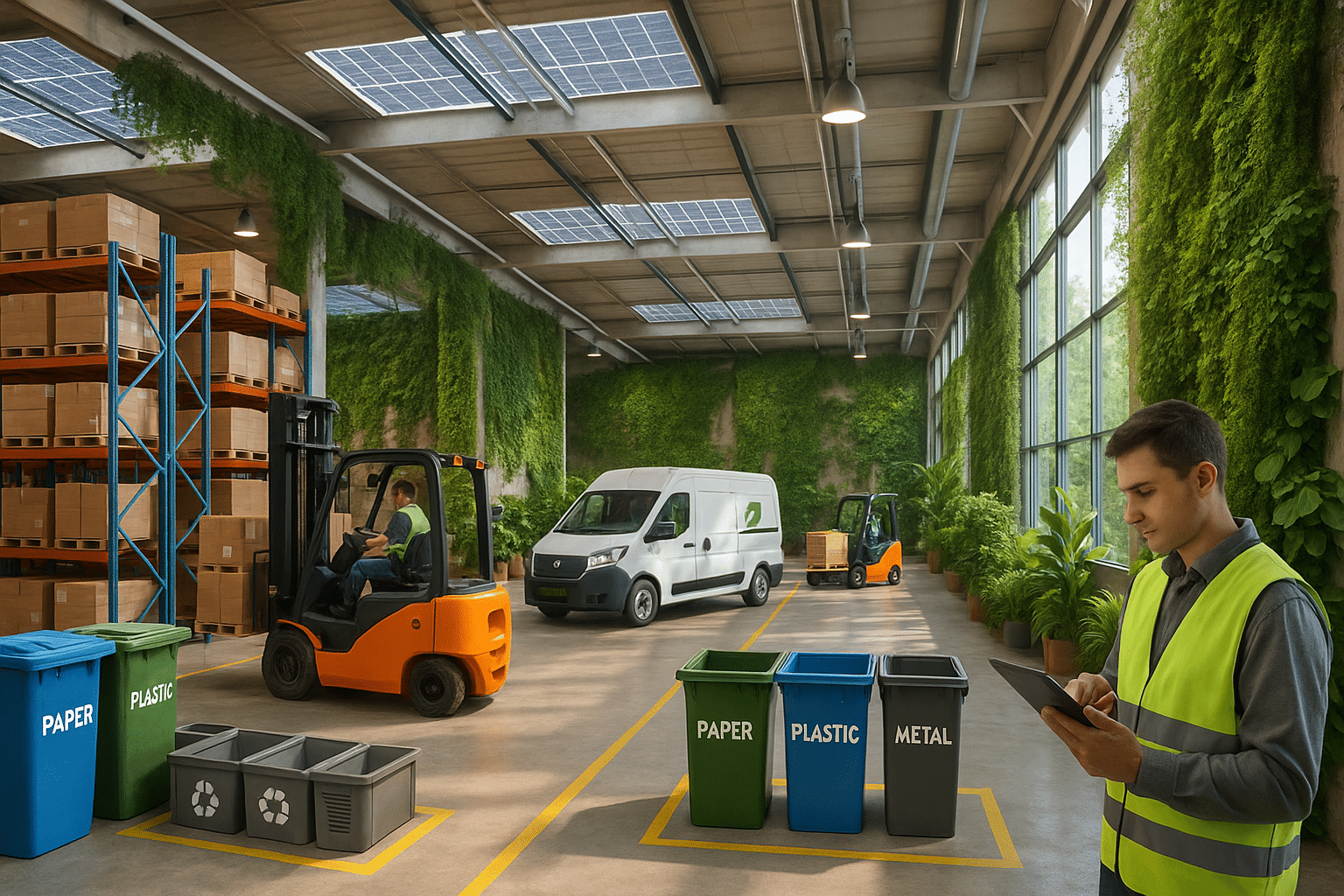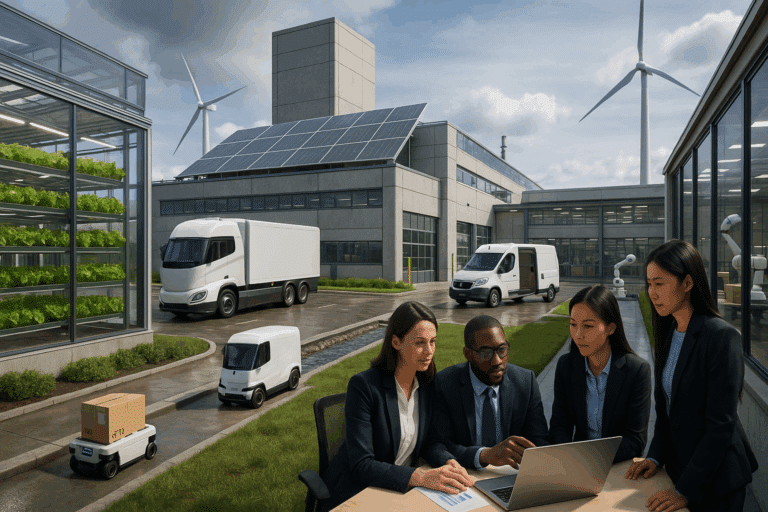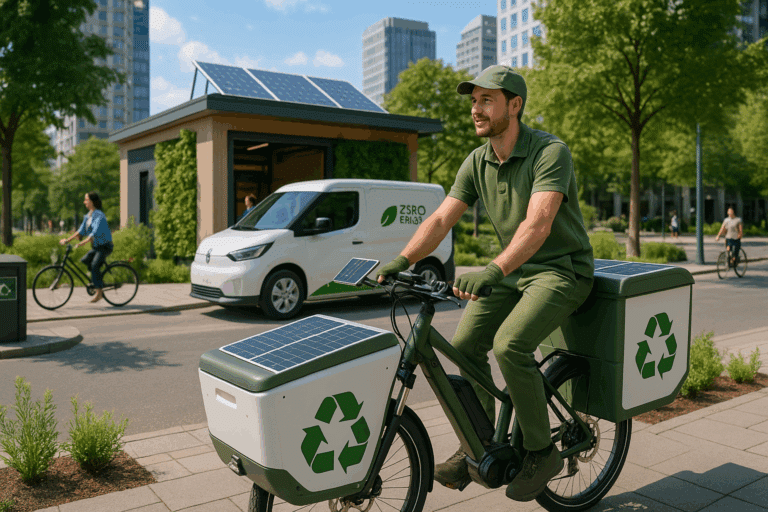Companies worldwide are actively looking for ways to reduce their carbon footprint and implement sustainable practices in their operations. In this endeavor, one area has emerged as a critical factor – the supply chain. More specifically, warehousing. The concept of ‘greening the supply chain’ has become a trending topic, and for a good reason. 🌍📦
In this article, we delve deep into sustainable warehousing solutions, exploring innovative ways to reduce energy consumption, waste production, and overall environmental impact. We will discuss the importance of this green revolution in the supply chain, examine the challenges faced, and illuminate the benefits of sustainable warehousing.
Sustainable warehousing is not just about being kind to the environment; it’s about creating cost-effective, efficient, and future-proof solutions that benefit businesses in the long run. With consumer awareness on the rise, companies that demonstrate a commitment to sustainability can also gain a competitive advantage.👏🌿
First, we will delve into the role of warehouses in the supply chain and why they have become a focal point for green initiatives. We will look at the environmental impact of traditional warehousing practices and explore how innovative technologies can help us create more sustainable solutions.
From there, we will shift our focus to specific strategies for implementing sustainable practices in warehouses. This will include both high-tech solutions, such as automation and renewable energy, and low-tech methods, like recycling and efficient design. Along the way, we will also consider the benefits and challenges of these approaches, providing a balanced view of the topic. ⚖️💡
Next, we will explore some real-world examples of companies that have successfully integrated sustainable warehousing into their operations. We will examine how these companies have benefited from their green initiatives, providing concrete evidence of the advantages of this approach. This section will serve as an inspiration for businesses contemplating taking the green leap. 💼🍃
Finally, we will look towards the future, discussing the trends that are likely to shape the landscape of sustainable warehousing in the coming years. We will consider how these trends might influence the strategies businesses choose to implement and the potential impact they could have on the industry as a whole. 🚀🔮
The journey to a greener future may be challenging, but it is undoubtedly worthwhile. So, whether you’re a supply chain manager, a business owner, or simply someone interested in sustainability, this comprehensive guide to sustainable warehousing will provide valuable insights to help you navigate this exciting field.
Ready to explore the future of warehousing? Let’s delve into the world of green supply chains and discover how sustainable warehousing solutions are paving the way for a brighter, greener future. 🚀🌿
Understanding the Green Supply Chain
In the era of climate change and environmental consciousness, the term “Green Supply Chain” has emerged as a key area of interest for businesses worldwide. It refers to the incorporation of environmental considerations into supply chain management, from product design and material sourcing to product delivery and end-of-life management. It’s a holistic approach that takes into consideration every aspect of a product’s life cycle to minimize environmental impact. But what does it involve exactly, and how can sustainable warehousing solutions contribute to a greener future? Let’s delve into these questions and more in this in-depth analysis.
Before we delve into the specifics of sustainable warehousing, let’s first clarify what a green supply chain entails. In essence, it involves implementing eco-friendly practices at each stage of the supply chain, such as sourcing materials sustainably, reducing energy usage during production, minimizing waste, and optimizing logistics to reduce carbon emissions. Such practices are not only beneficial for the environment but also can lead to cost savings and improved brand reputation.
If you want a visual understanding of how a green supply chain works, check out this YouTube video titled “Green Supply Chain Management” by the channel ‘Supply Chain Way’. It provides a comprehensive overview of the concept, its benefits, and how to implement it.
Sustainable Warehousing: The Core of a Green Supply Chain
Now that we’ve established what a green supply chain is, let’s focus on one of its crucial components: sustainable warehousing. Warehousing operations are typically energy-intensive and generate a significant amount of waste, making them prime targets for sustainability initiatives. Sustainable warehousing involves implementing practices that minimize environmental impact, such as energy-efficient lighting and equipment, waste reduction and recycling programs, and sustainable building design.
When it comes to building design, for example, warehouses can incorporate green building principles, such as using renewable materials, optimizing natural light, and installing energy-efficient heating and cooling systems. Furthermore, warehouses can reduce their environmental footprint by adopting lean inventory management practices that minimize waste and improve efficiency.
For a more practical understanding of sustainable warehousing, check out the YouTube video “Sustainable Warehousing” by the channel ‘DHL’. It showcases DHL’s green warehousing initiatives and provides valuable insights into how businesses can implement similar practices.
Comparing Traditional and Sustainable Warehousing Solutions
| Traditional Warehousing | Sustainable Warehousing | |
|---|---|---|
| Energy Usage | High due to reliance on non-energy efficient equipment and lighting | Low due to use of energy-efficient equipment, lighting, and building design |
| Waste Management | High waste generation with little focus on recycling | Implementation of waste reduction and recycling programs |
| Building Design | Designed for functionality with little consideration for environmental impact | Designed with green building principles to minimize environmental impact |
| Inventory Management | Focus on maintaining high inventory levels to meet demand | Adoption of lean inventory management practices to reduce waste and improve efficiency |
The table above compares traditional warehousing solutions with sustainable ones. As you can see, sustainable warehousing not only reduces environmental impact but also has potential to increase operational efficiency. For a more detailed comparison, refer to the YouTube video “Sustainable vs. Traditional Warehousing” by the channel ‘Warehouse Innovations’.
The Future of Sustainable Warehousing
As environmental awareness continues to grow, sustainable warehousing is set to become the norm rather than the exception. Technologies such as automation, artificial intelligence (AI), and the Internet of Things (IoT) are playing a pivotal role in this transition, making warehouses more efficient and less reliant on energy-intensive practices.
For example, automated guided vehicles (AGVs) and autonomous mobile robots (AMRs) can reduce energy consumption by optimizing routes and minimizing unnecessary movements. AI can improve inventory management, reducing waste and lowering the need for extensive storage space. IoT sensors can monitor energy usage in real-time, enabling warehouses to identify inefficiencies and make necessary adjustments.
The YouTube video “The Future of Sustainable Warehousing” by the channel ‘IBM Industries’ explores these technologies and their impact on warehousing in more detail. Make sure to watch it for a glimpse into the future of warehousing.
Final Thoughts
In conclusion, greening the supply chain through sustainable warehousing is not just a trend, but a necessity in today’s environmentally-conscious world. It offers numerous benefits, including cost savings, improved efficiency, and a better brand image. Moreover, with the advent of advanced technologies, sustainable warehousing is becoming more achievable than ever before. It’s high time that businesses embrace this approach and contribute to a greener future.
To learn more about sustainable warehousing and how to implement it in your business, be sure to watch the YouTube videos mentioned throughout this article and consider consulting with a green supply chain expert.
Remember, every step towards sustainability counts. Start greening your supply chain today and pave the way for a healthier planet tomorrow.

Conclusion
As we draw to the end of this comprehensive journey, it is pertinent to re-emphasize the significant points we have discussed. Our voyage through the intricate landscape of Information Technology (IT) and Engineering has unveiled the intricate structure and functionality of various elements within these fields. From the basics of software development to the advanced aspects of cyber security, we have dissected the layers of these fields in a manner that fosters understanding, regardless of one’s prior knowledge or expertise in these areas.
In the realm of software engineering, we’ve explored how the right development methodology can streamline the development process, enhance the product quality, and increase the project’s success rate. We delved into the diverse programming languages, each with its unique features and applications, painting a vivid picture of the extensive, multifaceted world of coding.
We underscored the growing importance of cybersecurity, highlighting its role in safeguarding our virtual world. From understanding how firewalls work to grasping encryption’s intricacies, we aimed to build a foundational understanding of these vital aspects.
Moreover, we examined the intersections of IT and Engineering with other fields like Business and Healthcare. This multi-disciplinary approach aimed to demonstrate the extensive reach of these technologies, impacting almost every aspect of our lives.
Throughout this journey, we have not only discussed the ‘what’ and ‘how’ of these complex subjects but also emphasized ‘why’ they matter in our ever-evolving digital world. After all, the understanding and application of these concepts are crucial for individuals and organizations aiming to remain relevant in the face of rapid technological advancements.
But this is not the end. In fact, it’s just the beginning. The universe of IT and Engineering is continually expanding, and there are always new concepts to explore, new skills to learn. So, let’s continue this journey together.
Remember, your thoughts and insights are invaluable to this discussion. So, whether you’re a seasoned expert or a novice in these fields, we encourage you to share your thoughts, questions, and experiences in the comment section below. Your perspective can shed new light on these topics, making our collective understanding richer.
Furthermore, we urge you to share this article with your peers, colleagues, or anyone you think might benefit from this information. By sharing our knowledge, we can create a more informed and technologically adept society.
In the end, it is crucial to apply the knowledge gained. Whether it’s choosing the right software development methodology for your next project, implementing robust cybersecurity measures, or simply understanding the digital tools we use daily, this knowledge can empower us to navigate our digital world more confidently and efficiently.
And remember, learning is a continuous journey, not a destination. There are always new frontiers to explore, new challenges to conquer. So, keep learning, keep growing, and keep pushing the boundaries of what’s possible.🚀
As we conclude, we would like to thank you for embarking on this journey with us, and we look forward to continuing this exploration together.🌐👩💻👨💻
If you want to delve deeper into these topics, here are some useful resources:
– IEEE Computer Society Technical Committee on Software Engineering
– What is cybersecurity? How to build a cyber security strategy
Remember, the journey of a thousand miles begins with a single step. So, take that step today, and let’s navigate the future together!💡



